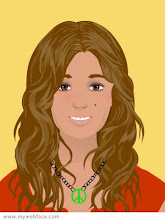I have learned many things in this class regarding inclusion, designer methods for teaching ESL, assessment tools, literacy development, and oral language tools. I am most interested in teaching younger student ESL classes. I noticed during my research on inclusion that several sources said that Inclusion was not the best program for newcomers or lower levels of proficiency. Because of this statement and because I will be teaching young ELL students, I don’t think that the Inclusion program will work effectively in my future classroom environment. I am interested in researching more about the self-contained model because I think that this program may be more appropriate for the age group I am interested in teaching.
There are several designer methods used to teach ESL; however, I found that I liked the Total Physical Response Method (TPR) the best.TPR was developed by James Asher and designed to mimic how infants learn their first language. Asher calls it a language conversation because the parent (or in this case the teacher) says something and the infant (or in this case the ELL) gives a physical response. The teacher will say an action word while demonstrating the action. This is then mimicked by the learner. The ELL will start by simply performing the action when the teacher gives the command while silently internalizing the patterns and sounds of the language. Eventually the student will be able to put the vocabulary/sound with the action. As the vocabulary becomes more difficult visual aids can be brought in to help portray meaning. This method would work best for young or beginner ELL in a self-contained classroom. This method is similar to how you would teach in early childhood classrooms. It uses visual aids and physical actions along with instruction to encompass all learning styles. In a younger classroom mostly all of the students learn best kinesthetically no matter what their native language is. TPR gives students an instant understanding of the target language with high speed long term retention in a low stress level environment.
During the course of the class I have also become familiar with assessment tools for ESL. I thought that when I used the SOLOM instrument it was much easier to assess the student. It breaks downs the categories very descriptively so I know exactly what I am looking for. I think that no matter what grade I teach in the future, the SOLOM instrument would work well. It does a more accurate job of defining what the student’s language is like and helps target what needs improvement. I would definitely use the SOLOM instrument in the future so that I can better assess the needs of my students.
I have also created and utilized so many wonderful tools in this class that I will be able to use in my classroom. For example, I can utilize cloze procedures to help my students with vocabulary and comprehension while using choral reading tools to aid in fluency development. At the moment, I would be the most comfortable with targeting reading fluency in my lessons. The key to reading fluency is modeling and practice. I can effectively help my students with reading fluency by continuously reading out loud to them on a daily basis. Reading to the students is one of my favorite parts of the school day. To be a good model for fluency, I think it’s important to be confident with my own fluency level and animated with expressions and vocal inflections during oral reading. It is also important to give the students lots of time and different ways to practice. Utilize popcorn reading, shared reading, silent reading, etc. Mix up the technique daily to keep the student from becoming bored or frustrated. I am also now confident in selecting appropriate reading materials for my students. Hooray for methods courses!!!! : )
Tuesday, July 6, 2010
Subscribe to:
Post Comments (Atom)


Excellent advice, Anna! I am glad that the information was relevant and useful. I'll "look" for you in future classes! Have a great summer! ;-)
ReplyDelete